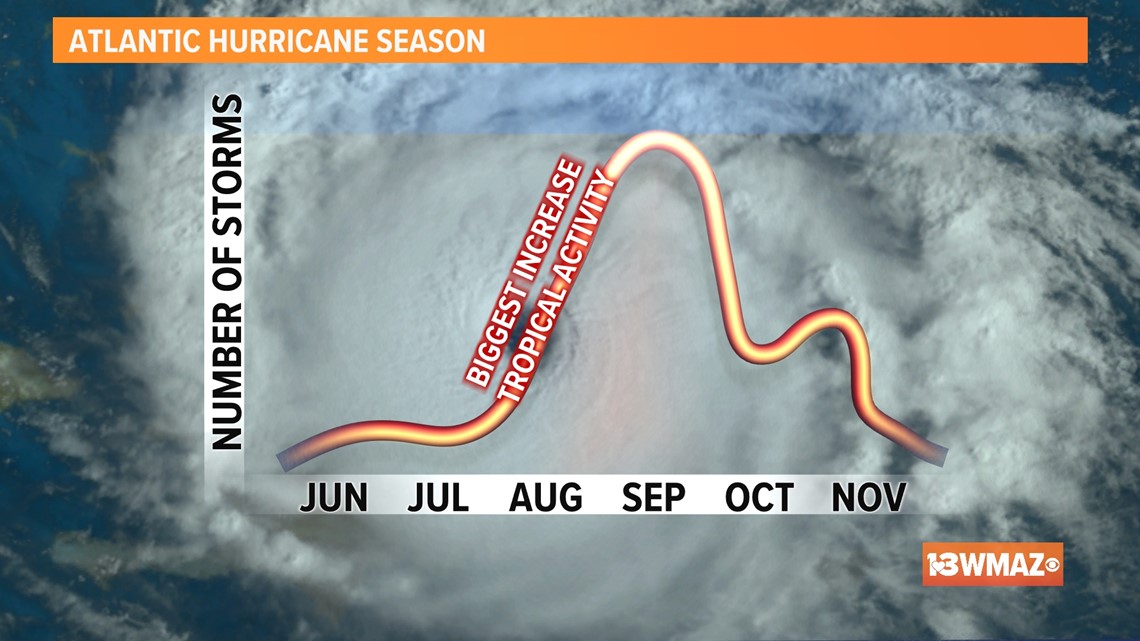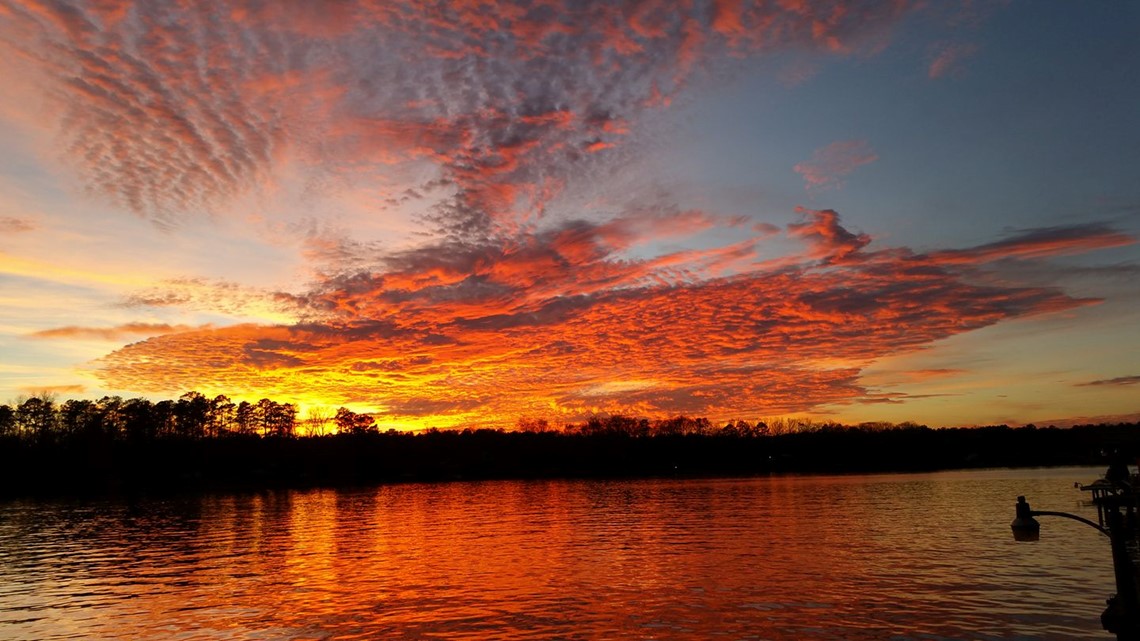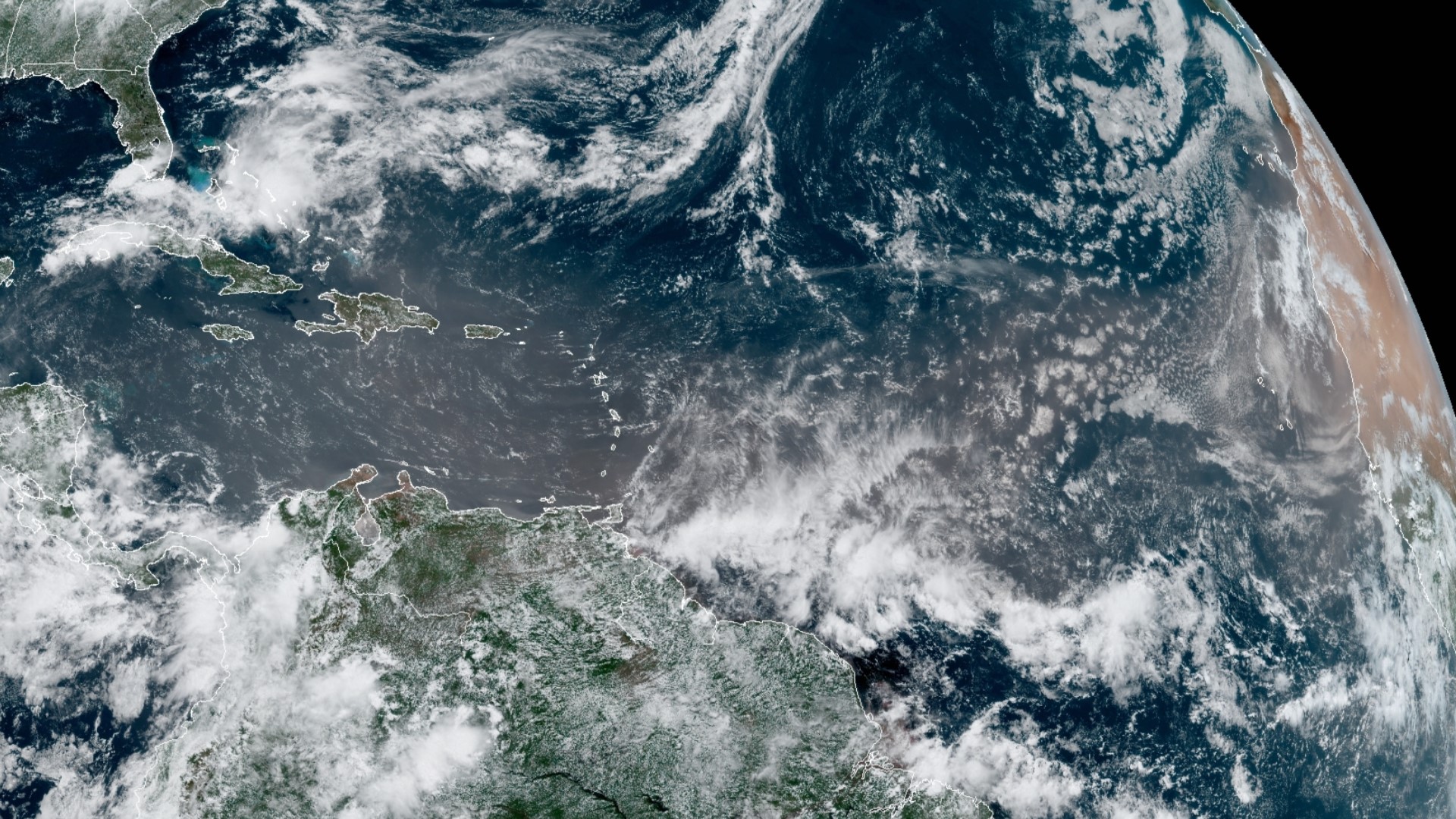MACON, Ga. — It's widely known many of the tropical systems that make it to the East Coast originate off the west coast of Africa during the Atlantic hurricane season.
But these tropical systems are not the only event to affect people thousands of miles away.
The National Oceanic and Atmospheric Administration (NOAA) defines the Saharan Air Layer as an immense mass of dust and other particles suspended throughout the lower-middle portion of the atmosphere.
These dust storms are a result of winds turning up large amounts of dust in the Saharan desert. Upper-level winds send this Saharan Desert dust westward, similar to how tropical storms move across the Atlantic Ocean.
It's a very common occurrence in the early months of hurricane season, specifically from June to August, for Saharan dust to even stretch over as far as the central parts of the United States.


As one might guess, this dust can be very troubling for people with allergies and respiratory complications.
Symptoms include dry cough, watery eyes, and throat aggravation for most, but could be more critical for people who posses an autoimmune disease, such as asthma or chronic lung issues.
On the other hand, Saharan dust is not all harmful. A large presence of dust in the air has been known to suppress tropical activity due to the abundance of dry air and strong winds. This is partially the reasoning for the earlier months of hurricane season being less active during the peak of Saharan dust lofting in the atmosphere.


Some of the most beautiful sunsets are created by a large amount of Saharan dust. The dust particles increase scattering, the process by which white light from the Sun is dispersed across the atmosphere, and make the colors of a sunset more vibrant and deeper in color.


The underlying issue with Saharan dust remains that it is incredibly difficult to spot, at least in person.
Advancements and progressions in satellite imagery in recent years have provided meteorologists and the general public with the ability to spot this massive dust migration with a variety of channels that include visible, infrared, and water vapor.
Ultimately, Saharan dust is a factor that can affect everyday lives for the better or worse. Be sure to stay weather aware and cautious as we approach the beginning of summer.
RELATED: Weather Works: What is a microburst?

